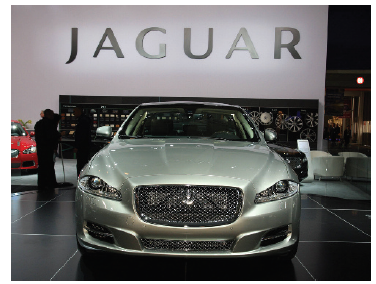1. Do you think JLR will prosper under the ownership of Tata Motors? 2. What do you...
Question:
2. What do you think are the biggest challenges facing the Jaguar and Land Rover brands in the next few years?
3. Tata Motors recently introduced the Nano, the world€™s leastexpensive car. The Nano fits Tata€™s strategic goal of building a low-cost car for the Indian market. Can Tata succeed in targeting both the very low end of the auto market as well as the high end?
In 2008, Tata Motors paid the Ford Motor Company $2.3 billion for UK-based automakers Land Rover and Jaguar. The deal came about as Detroit€™s automakers faced one of the worst business environments in decades. The Big Three posted losses in the billions of dollars; by 2008, with the global recession and credit crunch causing a sharp decline in demand, executives from GM and Chrysler appealed to Washington for a bailout. Meanwhile industry observers called for Ford to shed some of its luxury brands.
When Ford acquired Jaguar in 1989, the American company lacked a high-end luxury model. Executives were betting that they could leverage an exclusive nameplate by launching a new, less expensive line of Jaguar and selling it to more people. The challenge was to execute this strategy without diminishing Jaguar€™s reputation. Daniel Jones, a professor at the University of Cardiff and an auto industry expert, noted that the Ford name is synonymous with €œbread and butter€ cars. Meanwhile, Ford€™s Japanese competitors, including Honda, Nissan, and Toyota, pursued a different strategy: They launched new nameplates and upgraded their dealer organizations. Status- and quality-conscious car buyers embraced Lexus, Infiniti, and other new luxury sedans that offer high performance and outstanding dealer organizations.
Despite Jaguar€™s classy image and distinguished racing heritage, the cars were also legendary for their unreliability. Gears sometimes wouldn€™t shift, headlights wouldn€™t light, and the brakes sometimes caught fire. Part of the problem could be traced to manufacturing. To remedy the situation, Ford invested heavily to update and upgrade Jaguar€™s plant facilities and improve productivity. As a benchmark, Ford€™s manufacturing experts knew that German luxury car makers could build a vehicle in 80 hours; in Japan, the figure was 20 hours. If Jaguar were ever to achieve world-class status, Jaguar€™s assembly time of 110 hours per car had to be drastically reduced.
As the 1990s came to an end, Jaguar introduced several new vehicles. In 1997, amid industry estimates that Ford€™s cumulative investment had reached $6 billion, Jaguar launched the $64,900 XK8 coupe and roadster. Styling cues clearly identified this model as the successor to Jaguar€™s legendary XK-E, or E-Type. In the spring of 1999, the S-Type sedan was introduced to widespread acclaim. One observer called the S-Type a €œhandsome car, instantly recognizable as a Jaguar, yet totally contemporary.€ In 2001, the long-awaited €œbaby Jaguar,€ the $30,000 X-Type compact sports sedan, was unveiled. Company executives hoped to attract a new generation of drivers and capture a significant share of the entry-level luxury market dominated by the BMW 3-series and the Mercedes C-Class. The X-Type was built on the same platform as the Ford Contour.
The early signs were positive. In 2002, first-year sales of the X-Type boosted Jaguar€™s worldwide sales to a record 130,000 vehicles, a 29 percent increase. Unfortunately, the company was not able to sustain the momentum. A backlash began to develop. For example, critics of the X-Type derided it as a €œwarmed-over Ford.€ Critics also found fault with Ford for failing to move Jaguar€™s styling forward enough. As one longtime Jaguar owner explained, €œThey lost their way in what the public wanted. Instead of making Jaguar a niche player, where it should be, they tried to go the mass-production route.€ In 2005, bowing to pressures to move the venerable nameplate upmarket again, it was announced that the least expensive Jaguar model, the 2.5 liter X-Type, would be discontinued. In 2008, the curtain came down on Jaguar€™s two decades under American ownership.
Exhibit 9-9

A dealer in the securities market is an individual or firm who stands ready and willing to buy a security for its own account (at its bid price) or sell from its own account (at its ask price). A dealer seeks to profit from the spread between the...
Step by Step Answer:






